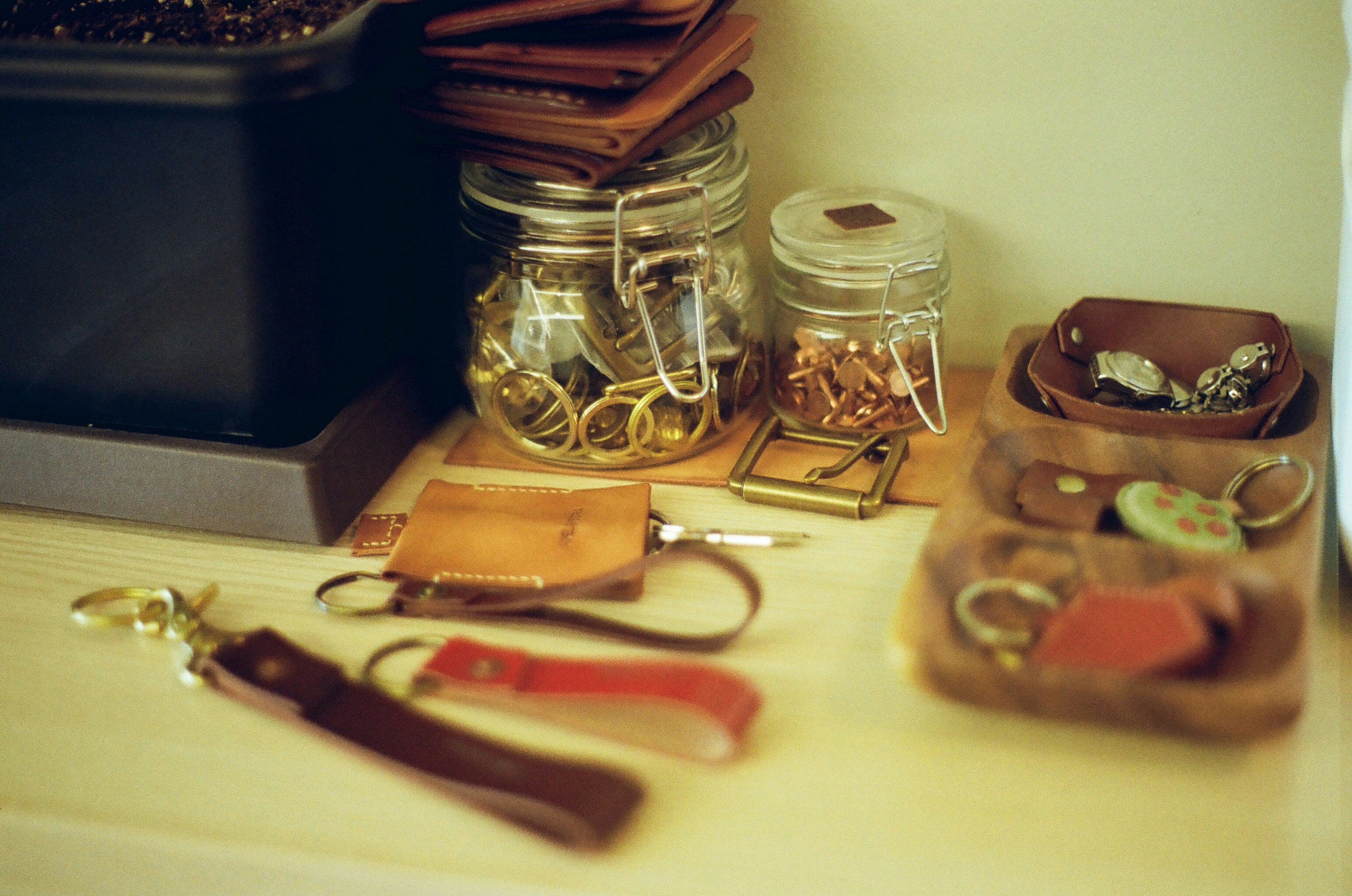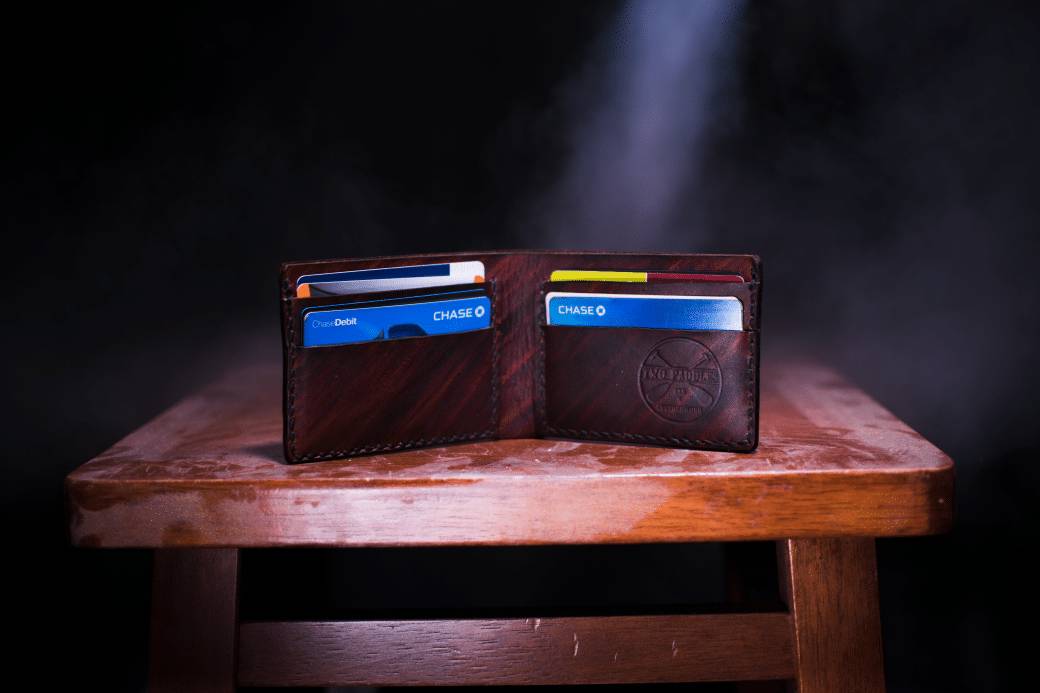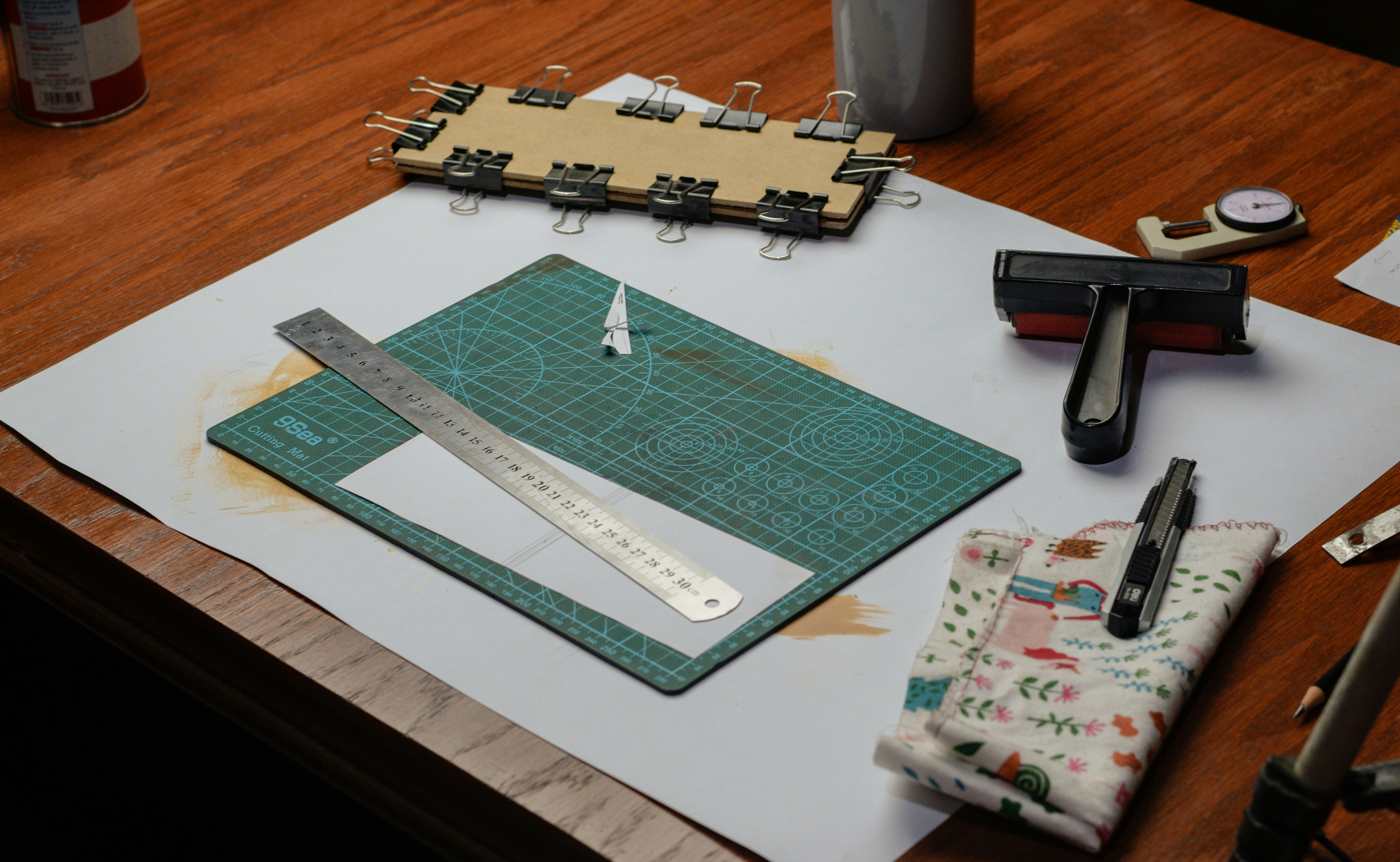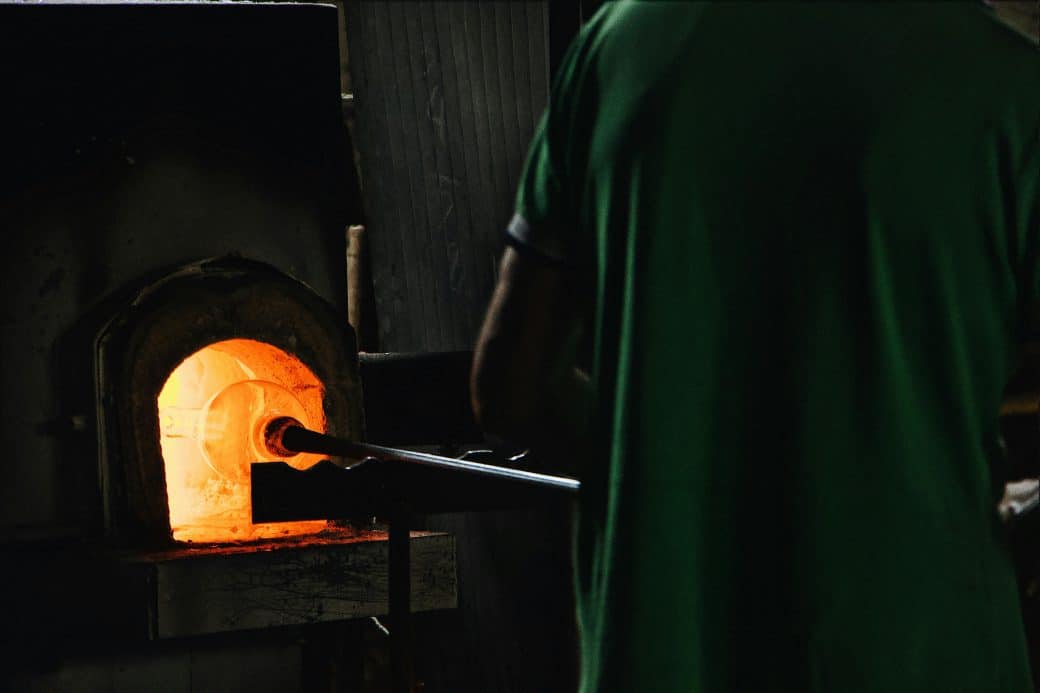Ever since I stumbled upon the world of leatherworking, it’s safe to say I’ve been completely mesmerized. The craft itself is an art, blending tradition with innovation to create pieces that are not just functional, but also deeply personal and expressive. In my latest exploration, I’ve decided to share an ultimate guide that covers all the ins and outs of leatherworking. From the initial cut to the final stitch, I walk you through each step, unravel the mystique surrounding this craft, and show you why it’s not just about making something durable, but also about embedding your own story into the pieces you create. So, if you’ve ever been curious about how to start crafting with leather or you’re looking to refine your skills, this guide is tailor-made for you.

Understanding Leatherworking: The Basics
Definition of leatherworking
Leatherworking, to me, is an art form that encompasses crafting with leather as the primary material. It involves various techniques including cutting, dyeing, stitching, and finishing to create both functional items like wallets and belts, and decorative pieces. It’s fascinating how a simple hide can transform into something so beautiful and durable through leatherworking.
Types of leather materials used in leatherworking
In the realm of leatherworking, there are several types of leather materials used, each differing in texture, thickness, and durability. The most common types include full-grain leather, which keeps the hide’s natural surface; top-grain leather, which is slightly thinner than full-grain; split leather derived from the lower layers of the hide; and bonded leather, made from leftover scraps. Each type has its specific uses, depending on the leatherworker’s project.
History and evolution of leatherworking
The history of leatherworking stretches back to ancient times, where early humans used animal hides for clothing, shelter, and tools. Over centuries, the methods of preserving and crafting leather evolved significantly, from the simple drying and tanning of hides using natural resources to the advanced chemical processes used today. The evolution of leatherworking reflects humanity’s ingenuity and adaptability, turning what was once a survival strategy into a sophisticated craft.
The Beauty Behind Each Leather Texture
Understanding the different types of leather grains
Leather grains refer to the texture surface of the leather. Full-grain leather retains the natural markings and texture of the animal’s skin, making each piece unique. Top-grain leather, on the other hand, is sanded down to create a more uniform appearance. The variety in leather grains not only affects the look and feel of the final product but also its durability, with full-grain leather generally being the strongest.
How these grains affect the final product
The grain of the leather significantly influences the final product’s aesthetics and functionality. For instance, full-grain leather, with its untouched surface, develops a patina over time, adding character to items like wallets or boots. Reduced grains, such as in top-grain leather, might not age the same way but offer a more consistent appearance for projects requiring uniformity.
The aesthetic influence of leather textures in design
Leather textures play a critical role in design, giving items a distinct, tactile quality that can’t be replicated by synthetic materials. Whether it’s the ruggedness of a full-grain leather belt or the smooth elegance of a top-grain leather briefcase, the texture adds depth and character, making each piece uniquely appealing.

Essential Tools in Leatherworking
Basic tools for beginners in leatherwork
For anyone looking to start in leatherworking, a few basic tools are essential. A sharp knife is crucial for clean cuts. Cutting mats protect your working surface. Stitching tools like needles and thread are indispensable for assembling leather pieces. Lastly, a good ruler or edge guide helps in making accurate measurements and straight cuts, which are fundamental in creating a polished finished product.
Advanced tools for professional leatherworkers
As one progresses in leatherworking, more advanced tools become necessary. Swivel knives for carving, burnishers for smoothing edges, and embossing tools to add decorative textures elevate the craftsmanship. Advanced leatherworkers may also use presses for uniform stamping or splurge on leather sewing machines specifically designed to handle the thickness and toughness of leather.
Maintenance and usage tips for various tools
Maintaining leatherworking tools ensures their longevity and effectiveness. Keeping blades sharp, storing tools in dry conditions to prevent rust, and regularly cleaning any residue off tools after use is crucial. For specialized tools like sewing machines, following the manufacturer’s maintenance guide and using them as intended can prevent damage and wear.
Safety Measures in Leatherworking
Handling sharp tools safely
In leatherworking, sharp tools are a necessity but can be hazardous if not handled with care. Always cut away from your body, use protective equipment like cut-resistant gloves, and ensure that tools are stored securely when not in use to prevent accidents.
Proper ventilation and chemical safety
Working with dyes, adhesives, and finishes means dealing with chemicals that can be harmful if inhaled or come into direct contact with the skin. Ensuring proper ventilation in your workspace and using protective gear such as gloves and masks can mitigate these risks.
How to treat minor cuts and scrapes from leatherwork
Even with precaution, minor injuries can occur. Treating cuts and scrapes promptly by cleaning the wound, applying antibiotic ointment, and covering with a bandage helps in preventing infection. In case of more severe injuries, seeking medical attention is paramount.

Leatherworking Techniques for Beginners
Step-by-step guide to creating basic leather items
Starting with simple projects like keychains or simple wallets can help beginners get a feel for the material. First, select your leather type, then cut your pattern pieces with precision. Punch holes for stitching, and use a saddle stitch for durability. Finally, finish the edges for a polished look.
Leather stitching techniques
The saddle stitch, used in hand-stitching leather, is a fundamental technique for beginners. It involves using two needles to loop the thread back and forth, creating a durable and aesthetically pleasing stitch. Mastering this technique is crucial for creating strong, long-lasting leather goods.
How to cut leather accurately
Accurate cuts are essential in leatherworking. Using a sharp utility knife or rotary cutter and a ruler or straight edge ensures straight, clean cuts. Always work on a cutting mat to protect both your tools and the work surface. Making gentle passes, rather than trying to cut through the leather in one go, can also improve precision.
Advanced Leatherworking Techniques
Creating complex leather patterns
As skills progress, creating more complex patterns becomes feasible. This involves more intricate cutting, layering, and sometimes weaving leather. Understanding how different leather types behave and experimenting with textures and finishes can add depth to your work.
How to emboss and deboss leather
Embossing and debossing add beautiful, raised or indented patterns on leather. Using stamps, molds, or presses, you can create intricate designs. Properly preparing the leather by moistening it, and applying the right amount of pressure, ensures clear, crisp designs.
Use of dye on leather
Dyeing leather allows for customization of color and finish. Whether using water-based or oil-based dyes, applying the dye evenly and in layers achieves the best results. Sealing the dyed leather with a finish protects the color and the material itself.

Leather Product Care and Maintenance Guide
How to clean and condition leather items
Regular cleaning and conditioning help in maintaining leather’s beauty and durability. Dusting the item with a soft cloth and applying a leather cleaner removes surface dirt. Following up with a leather conditioner restores moisture, keeping the leather soft and preventing cracks.
Steps to storing leather products
Proper storage is essential to prevent damage to leather items. Store leather goods in a cool, dry place away from direct sunlight or heat sources, which can dry out and fade the leather. Using breathable covers, like a cotton bag, can protect items from dust while allowing air circulation.
Understanding and fixing common leather damages
With time, leather might incur scratches, stains, or fading. Most scratches can be buffed out with a soft cloth; stains may be treated with a specialized leather cleaner. For fading or severe damage, professional services might be the best option to restore the item’s appearance.
Creating a Leatherworking Studio at Home
Choosing a suitable workspace
A dedicated space for leatherworking aids in creativity and efficiency. It doesn’t have to be large but should have enough room for your workbench and storage for your tools and materials. Adequate lighting and ventilation are also crucial for a comfortable and safe working environment.
Organizing tools for efficient workflow
An organized workspace streamlines your projects. Using shelves or pegboards to store tools within reach but out of the way keeps the workspace clutter-free. Having designated areas for cutting, stitching, and finishing tasks helps in maintaining an efficient workflow, reducing time and effort.
Important considerations for safety and functionality
Safety and functionality go hand in hand in a leatherworking studio. Ensuring tools are stored safely, chemicals are kept in correctly labeled containers, and a first aid kit is accessible can prevent accidents. Functional considerations, like ergonomic workspace design and proper ventilation, also play a vital role in creating a conducive working environment.
Sustainable Practices in Leatherworking
Understanding eco-friendly leather
Eco-friendly leather, such as vegetable-tanned leather or recycled leather, has a lower environmental impact than traditionally tanned leather. These materials offer sustainable alternatives for environmentally conscious leatherworkers, contributing to a more responsible craft.
Environmentally responsible disposal of leather scraps
Minimizing waste is essential in sustainable leatherworking. Utilizing small leather scraps for smaller projects, donating them to educational institutions or artists, or finding recycling facilities that accept leather, are ways to responsibly dispose of and reduce waste.
Promoting sustainable leatherworking practices
Beyond individual actions, promoting sustainable practices within the leatherworking community can amplify positive environmental impact. This includes sharing knowledge on eco-friendly materials and disposal methods, supporting suppliers that practice sustainable sourcing, and encouraging others to adopt more responsible habits.
Turning Leatherworking into a Profitable Business
Building a brand around leatherwork
To turn leatherworking into a profitable business, building a strong brand that reflects your craftsmanship, style, and values is crucial. This involves creating a cohesive product line, consistent branding across packaging and marketing materials, and engaging storytelling that connects with your audience.
Pricing your work appropriately
Pricing is a key aspect of turning leatherworking into a business. Calculate your costs accurately, including materials, time, and overheads. Researching the market to understand what customers are willing to pay for handmade leather goods also helps in setting competitive prices that reflect the quality and craftsmanship of your work.
Marketing and selling your products online
Online platforms offer vast opportunities for selling leather goods. Utilizing social media, e-commerce sites, and your website to showcase your products can reach a wide audience. High-quality photos and engaging descriptions that highlight the uniqueness of your products enhance online visibility and sales.
Participating in local craft shows and fairs
Local craft shows and fairs allow for direct interaction with potential customers and building a local customer base. These events offer the chance to display the quality of your workmanship up close and to share your passion for leatherworking, creating personal connections that can lead to lasting customer relationships.



